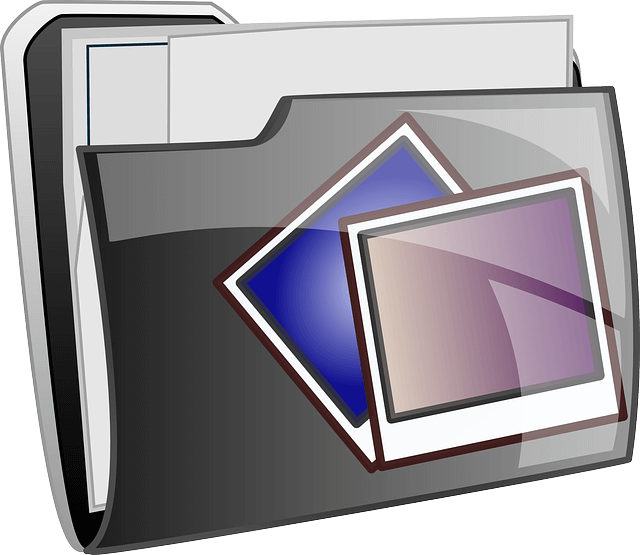If you’re an avid crossword solver, chances are you’ve come across a clue that asks you to “compress as a file“. While this might seem like an intimidating task at first, it’s actually quite simple once you know what it means. File compression is the process of reducing the size of a file without altering its contents, making it easier to store and share online.
In this blog post, we’ll cover everything you need to know about compressing files, including different types of compression methods, benefits of using compressed files and how to use popular compression software. So if you’re ready to become a pro at solving those pesky “compress as a file” clues in your crosswords, read on!
What is file compression?
File compression is the process of reducing the size of a file without modifying its content. This can be achieved by removing redundant or duplicate data from the file, as well as using algorithms to compress and store data more efficiently.
There are two main types of file compression: lossy and lossless. Lossy compression removes some information from the original file, resulting in a smaller size but also lower quality. This type of compression is often used for multimedia files like images and videos. On the other hand, lossless compression keeps all the original data intact while still reducing the overall size of the file.
Compress as a file crossword clue, One major benefit of compressed files is that they take up less space on your computer’s hard drive or online storage platforms like Google Drive or Dropbox. This means you can store more files without having to worry about running out of space.
Another advantage is that compressed files can be transmitted over networks much faster than uncompressed ones due to their smaller size. This makes them ideal for sharing large files with others through email attachments or cloud-based services.
File compression provides an effective way to reduce storage space usage and speed up data transfer while maintaining high-quality content integrity.

The different types of file compression
There are two main types of file compression: lossless and lossy.
Lossless compression reduces the size of a file without losing any data, meaning that when the file is decompressed, it will be identical to its original form. This type of compression is ideal for text documents, spreadsheets, and images that need to maintain their quality.
On the other hand, lossy compression sacrifices some data in order to achieve a higher level of compression. Lossy compression techniques work best for media files like music or videos where minor losses in quality are less noticeable.
Within these two categories lie different methods such as:
– ZIP: One of the most widely used forms of lossless compressions.
– RAR: A proprietary format known for its high levels of encryption.
– JPEG: A popular method used for image files which uses lossy compression.
– MP3: An audio format that employs lossy algorithms to reduce file size while maintaining sound quality.
It’s important to choose the right type and method depending on your needs because using an inappropriate technique can result in poor-quality compressed files.
The benefits of file compression
File compression is a useful technique that brings many benefits to its users. One of the most significant advantages of file compression is that it reduces the size of files, allowing for easier storage and sharing. Smaller file sizes also mean faster upload and download times, which can save valuable time for both individuals and businesses.
Another benefit of file compression is improved organization. Compressed files take up less space on your computer or device, making it easier to keep track of important documents without cluttering your hard drive. Additionally, compressed files allow you to store more data in a single location while taking up minimal disk space.
In addition to these practical benefits, file compression can also enhance security by encrypting sensitive information within compressed files. This added layer of protection ensures that only authorized users have access to crucial data.
Using compressed files can help reduce bandwidth usage when transferring large amounts of data over networks or the internet. This not only saves time but also helps reduce costs associated with excess network traffic.
There are numerous benefits to using file compression techniques for both personal and business applications alike.

The best file compression software
When it comes to compressing files, using the right software can make all the difference.
Here are some of the best file compression tools available:
1. WinZip: This is one of the most popular file compression tools on the market. It offers a wide range of features, including support for multiple compression formats and encryption options.
2. 7-Zip: A free and open-source tool that supports a variety of formats, including ZIP, RAR, and TAR.
3. PeaZip: Another free tool that offers an easy-to-use interface and support for over 180 archive types.
4. Bandizip: This tool is known for its fast performance when compressing large files and has a user-friendly interface.
5. Ashampoo Zip Free: Offers strong encryption options and integrates with Windows Explorer for seamless integration into your workflow.
Ultimately, which software you choose will depend on your needs and preferences. Consider factors such as ease-of-use, supported formats, speed, security features before making your decision!
How to compress a file
Compressing a file is an effective way to save storage space and make it easier to share files.
Here are some easy steps on how to compress a file:
Step 1: Choose the right software
To compress your file, you need the right compression software. There are many free and paid options available online. Some of the most popular ones include WinZip, 7-Zip, and WinRAR.
Step 2: Select the files you want to compress
Once you have installed the compression software, select the files or folders that you want to compress.
Step 3: Choose your compression settings
After selecting your files/folders, choose your preferred level of compression from low/compressed size but longer processing time or high/less compressed but faster processing time.
Step 4: Start Compression
Clicking on “compress” will start the process which could take a few minutes depending on size and complexity of data being compressed
Step 5: Save Compressed Files
Once completed extraction location can be selected for saving newly compressed file(s).
In conclusion,hopefully this guide helped in learning how one can easily compress their desired file/folder into smaller sizes using readily available tools at no extra cost.

How to decompress a file
Decompressing a file is the process of extracting compressed data from a compressed file. It is the opposite of compressing a file and is equally important. You may need to decompress files that you have downloaded or received from someone else.
The first step in decompressing a file is to identify the type of compression used. There are different types of compression formats, such as ZIP, RAR, GZIP, and 7-Zip. Once you determine the format used for compression, find software that can decompress that particular format.
There are many free tools available online for unzipping or extracting files from various formats like WinZip and WinRAR. These tools allow you to extract all files contained within an archive into one folder on your computer.
Once you have installed the necessary software, right-click on the compressed file and select “Extract” or “Unzip”. The software will then prompt you to choose a location where it should extract all contents. Choose an appropriate location before initiating extraction.
After choosing your desired location for the extracted content, click OK or Extract button prompts depending on what program/software being used at this point which initiates extraction process where contents become uncompressed making them accessible without any barrier whatsoever.
It’s very easy to decompress files once you get familiar with how things work in each specific tool/program/software!
FAQs about file compression
FAQs about file compression:
1. What types of files can be compressed?
Almost any type of file can be compressed, including documents, images, videos, and audio files.
2. Will compressing a file affect its quality?
It depends on the type of compression used. Lossless compression retains all the original data without sacrificing quality while lossy compression removes some data to achieve smaller sizes but may result in lower quality.
3. Can I decompress a file even if I don’t have the same software that was used for compressing it?
Yes, most decompression programs are compatible with several different formats so you should still be able to access your compressed files even if you don’t have the exact same program that was used for compressing them.
4. How much space can I save by compressing my files?
The amount of space saved varies depending on factors such as the size and type of files being compressed and the type of compression method used.
5. Is it safe to use online file compression tools?
It depends on whether or not you trust the website providing these services since they will have access to your confidential information during this process.

Conclusion
File compression is an essential tool for anyone who wants to save space and improve the performance of their computer or device. There are many different types of file compression available, each with their unique benefits and drawbacks.
When it comes to choosing the best file compression software, make sure that you do your research and select a reliable program that meets your specific needs. It’s also essential to learn how to compress and decompress files properly so that you can use this powerful tool effectively.
Whether you’re dealing with large media files or just trying to free up some space on your hard drive, using file compression software can help you achieve your goals quickly and efficiently. By following these tips and tricks, anyone can master the art of file compression in no time!
See More: New Minnesota Bill Bans Warehouses From Firing Workers Over Undisclosed Quotas

